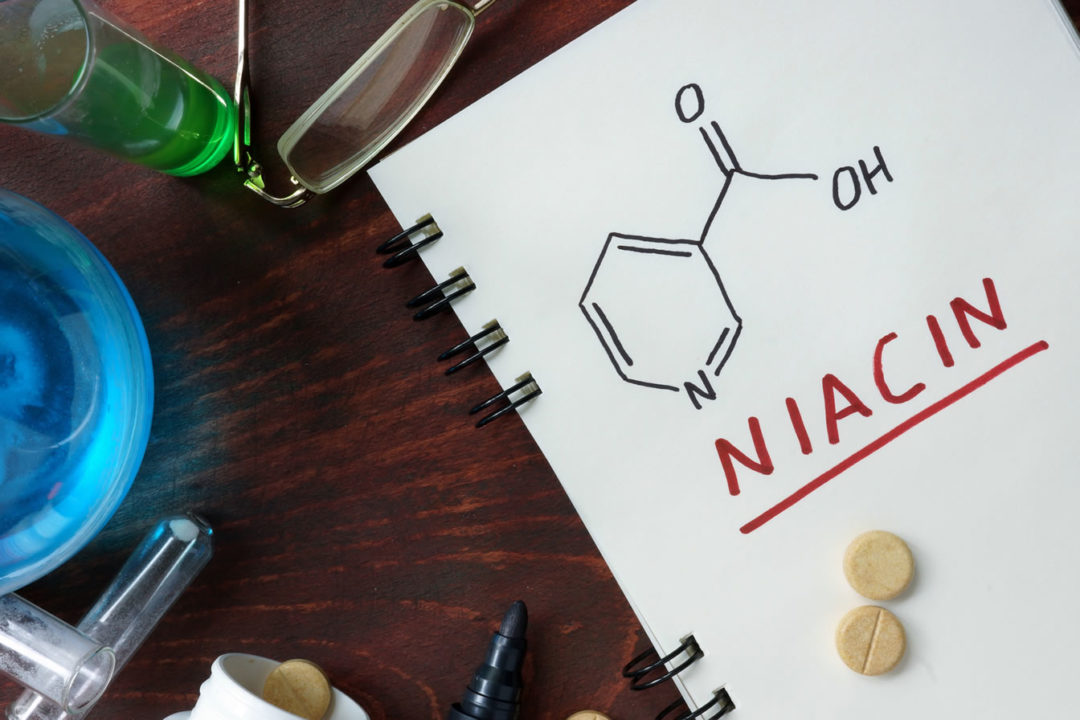Passwater:Michael, how important has niacin been to you?
Mooney:When I was 15 years old, in 1968, I was placed in a mental hospital, diagnosed as having schizophrenia and depression. In the hospital, the psychiatrist prescribed a tranquilizer (Mellaril) and was considering giving me electroshock treatments. I made a friend in the
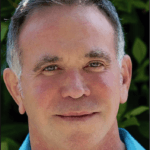
hospital that was being given electroshock treatments and every morning when he returned after shock therapy he looked like someone had erased his mind. His eyes were almost crossed and he experienced amnesia for several hours afterwards. Something told me that this wasn’t right for me.
Passwater:They call it Electroconvulsive Therapy (ECT) today. The Food and Drug Administration has placed it in the high-risk category since 1976. Basically, it passes electric currents through the brain, intentionally triggering a seizure and seems to cause changes in brain chemistry. Seems like life dealt you a lemon. So, what did you do?
Mooney:I told the psychiatrist what he wanted to hear so that he would allow me to leave the hospital.
Shortly after leaving the hospital I stumbled on an article in The First Whole Earth Catalog that provided details about Dr. Abram Hoffer’s successful use of high-dose (3,000 mg a day) niacin to treat psychophrenia.
I thought, it’s a vitamin, it’s not “toxic,” the way drugs can be. Why not try the 3,000 mg of niacin a day that Dr. Hoffer was prescribing to his patients?
Passwater:Except for student athletes, it’s unusual for a teenager to decide to start taking vitamin supplements. What did you do and when?
Mooney:I started taking 1,000 mg of immediate-release niacin three times a day and it changed my life and it continues to. I’ve also used virtually every other type of niacin. I’ve been taking about 3,000 mg of immediate-release niacin almost every morning since then, and have since occasionally added organic coffee with medium-chain triglycerides (MCTs) from coconut oil, and organic stevia extract blended into a froth to “clear” and energize my brain for the day.
When I first started taking this orthomolecular potency of niacin I was no longer depressed and confused. My mind was sharper, my senses more acute and I was generally happier and continue to be.
Additionally, from the time I started taking niacin I found that I actually like the warm/hot, itchy skin flush that niacin can cause. I feel awake and alive, like I just exercised.
The flushing diminishes or disappears with continued use. Taking high dose niacin causes such an increased demand for the biochemicals the body uses to produce the “flush” that the cells that synthesize these biochemicals become depleted of the compounds needed for the flush. The result is there’s little or no niacin flush. If one stops taking niacin for even a day, the cells have time to make enough of the raw materials that are required to flush again.
If one doesn’t like the flush they can take pharmaceutical-grade sustained release niacin, like Endur-Acin, which reduces the potential for flushing considerably. Endur-Acin is “clean” in that it doesn’t contain the aluminum and artificial colors that the number one prescribed sustained-release version of niacin, Niaspan, contains.
Passwater:Niacin was a life-saver for you, but I know that you became sort of a missionary for niacin and shared your success with others. Didn’t you encourage your father to take niacin too?
Mooney:I gave my father 500 mg of niacin and as he began to experience its many benefits we started on a journey that would turn into our primary life’s mission, to share the benefits of optimal higher potencies of niacin and other nutrients with health-seekers.
Shortly after I began taking niacin my ever-curious biochemist father, seeing the difference in me, and experiencing what 500 mg of niacin could do, decided he would experiment with 3,000 mg of daily niacin supplementation and it worked so well that he continued to. Dad also found that niacin improved cognitive functions.
Passwater:How so?
Mooney:Being a mathematician and a chemist, Dad recognized that taking higher potencies of niacin enabled him to remember, in his own words, “...longer strings of numbers when I am doing mathematical equations. Rather than seven numbers, I can remember fifteen numbers.”
One of the core SuperNutrition formulas that Dad created in 1975, called Brain Power, delivered 425 mg of niacin, accompanied by six synergistic nutrients.
Ten years later, in 1985, Drs. S. M. Loriaux and colleagues published a double blind, placebo-controlled human study that featured the dose of niacin that Dad put in Brain Power, but split into three divided doses per day. The study found that niacin improved memory test scores and sensory register, which is the five senses: sight, hearing, smell, taste and touch, telling the brain what’s going on, by as much as 40 percent (1).
That study could have led to a study to investigate niacin’s effect on IQ, but to the best of my knowledge, a study of niacin’s effect on IQ has not been conducted. This is just one of several instances where my father was ahead of his time.
Passwater:We will be discussing more about the health benefits of orthomolecular amounts of niacin with Dr. Saul in upcoming columns, but I am sure that you have seen many of these benefits yourself.
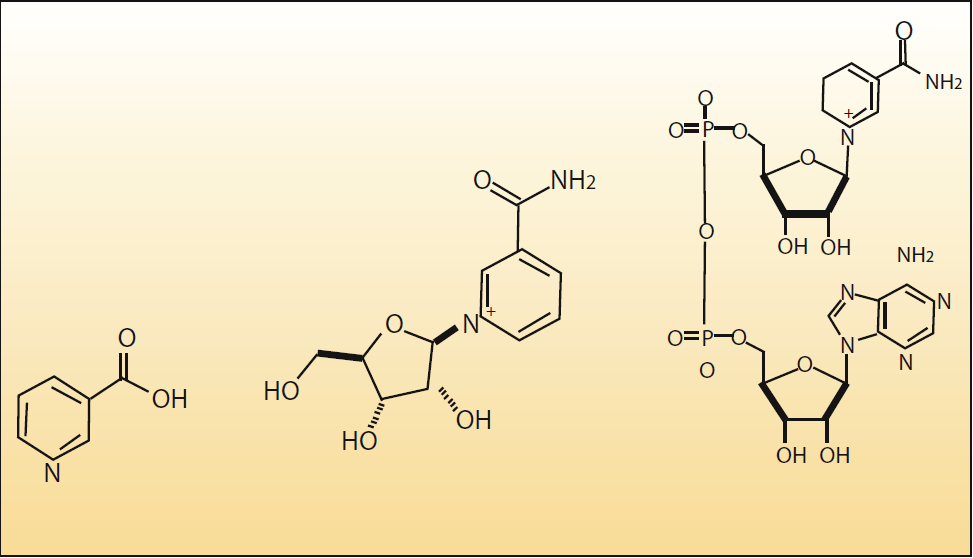
Mooney:While the mental clarity and mood balancing aspects were what I first experienced, a comprehensive blood test from True Health Diagnostics, which I have been getting for several years, demonstrated to me once again that niacin can indeed have profound beneficial effects on important blood lipids.
I eat a relatively high fat diet, including ample amounts of cholesterol-rich organic grass-fed butters and cheeses for their vitamin A, D and K2 content, which are also important for cardiovascular health, yet my total cholesterol measured 131, my HDL measured 49, my LDL measured 75 and my triglycerides measured 52. Over the years my blood tests have baffled medical doctors that bought into the fraudulent studies that statin manufacturers produce to make niacin’s superior effects on blood lipids seem to be untrue.
As I was experiencing niacin’s beneficial effects on cognitive function Dad was forming a hypothesis that niacin can play a role in slowing the aging process. This potential role was studied and published about 40 years later.
In 2013, a study in the journal Cell showed that nicotinamide adenine dinucleotide (NAD+), a molecule that niacin converts in the body, reversed mitochondrial aging in mice so well that the study’s authors said it was like “...turning a 60-year old into a 20-year old.”(2)
For most of my adult life I’ve been told that I look younger than my age. In retrospect, I am curious whether high-dose niacin supplementation has contributed to this.
Nicotinamide riboside (NR) sales have been rising rapidly as people learn more about its beneficial effects for such things as potentially supporting muscle mass and function (3,4), being a potential treatment for Alzheimer’s Disease (5), improving the function of stem cells and lifespan (6) and potentially reducing the risk of cancer (7).
Feeding studies show that niacin is a more efficient precursor for NAD+ in some ways than niacinamide (8). However, NR converts to NAD+ in the body at a significantly greater rate than niacin.
One characteristic of aging is a decrease in the body’s production of the body’s fundamental energy source, D-ribose. Niacin requires adequate D-ribose to form NR and thus NAD+. I take about 15 grams of D-ribose a couple of times a day because it potentially improves niacin’s conversion to NR, especially as we experience an age-related decline in the body’s production of D-ribose, and because it provides an improvement in enduring energy and reduced fatigue, although it is not an energy stimulant.
Some aging people notice a significant improvement in functional energy when they take D-ribose. I gave my sister D-ribose and she was amazed that she felt like cleaning her whole house and pruning her huge garden.
While I do take NR, I continue to take niacin because I like the occasional flush and the overall “feel” of niacin. To be sure that I potentially optimize niacin’s conversion to NR, I add D-ribose to the equation.
Passwater:Yes, NR has been attracting interest for its anti-aging, energy production and cognitive functions. NR is an effective precursor to NAD+ within cells whereas NAD+ itself as an oral direct supplement may not be as effective. NAD+ appears to directly activate key enzymes associated with longevity called sirtuins to regulate the genes of aging.
Niacin (also known as vitamin B3 and nicotinic acid) is involved in over 400 enzymatic reactions in the body and is essential for production and management of cellular energy. Niacin and its amide, nicotinamide, are precursors for the coenzyme Nicotinamide Adenine Dinucleotide. Niacin can act directly or indirectly. Niacin acts directly via G protein coupled receptors including Niacin receptor 1 (NIACR1) and Niacin receptor 2 (NIACR2). Niacin acts indirectly when it is used to form Nicotinamide Adenine Dinucleotide. Nicotinamide Adenine Dinucleotide exists in two forms, NAD+ and NADH, respectively the oxidized and reduced forms. NAD+ is written with a superscript plus sign because of the formal charge on a particular nitrogen atom, but at physiological pH, for the most part, it is actually a singly charged anion (charge of minus 1), while NADH is a doubly charged anion.
In metabolism, NAD accepts or donates electrons in redox (oxidation/reduction) reactions. These redox reactions involve the removal of two hydrogen atoms from the reactant, in the form of a hydride ion (H-), and a proton (H+).
Mooney:There are so many fascinating developments in the evolution of the science that continues to develop around niacin. Based on our personal experiences this is what we believed would happen back in the ‘70’s. That’s why Dad amalgamated many different streams of insight caused by his insatiable quest for knowledge and his interactions with Abram Hoffer, Hans Kugler, Linus Pauling and numerous other health visionaries including you, Dr. Passwater.
In fact, we got the name of our company, SuperNutrition, in 1997, from your book about orthomolecular nutrition, “Super-Nutrition Megavitamin Revolution,” which was first printed in 1975.
Passwater:That’s a fine choice for a name, but why did you want to start a new supplement company when there were already numerous choices in the marketplace?
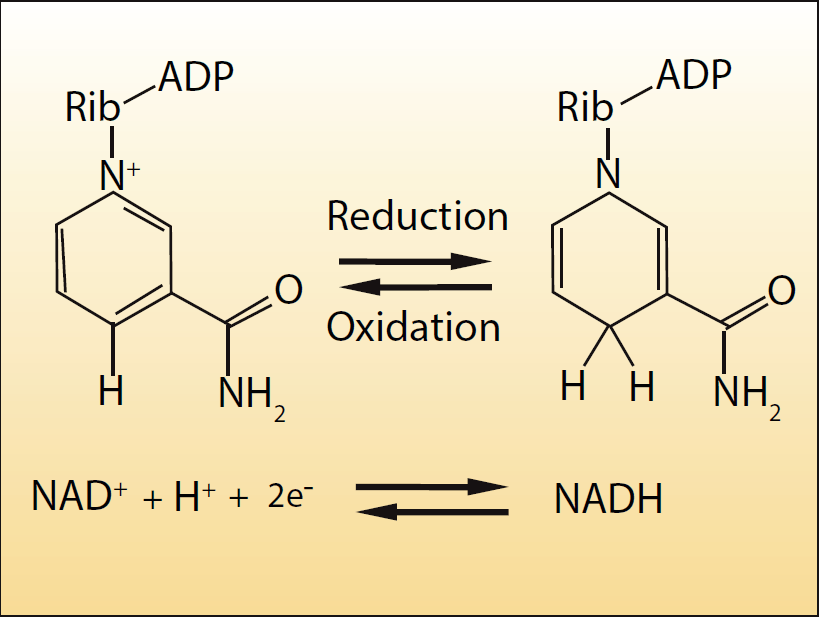
Mooney:When my father saw the profound changes in my mental and physical health after I started taking orthomolecular megavitamin potencies of niacin and other nutrients, eating “health foods,” back in the days before they were called “natural foods,” and making exercise and spirituality parts of my lifestyle, it inspired him to study orthomolecular nutrition.
After we had been moving along on our path for a few years, I said to Dad, “Why don’t we start our own vitamin company? We could make orthomolecular potency multivitamins that we want to take ourselves that don’t currently exist. We could share breakthroughs in the biochemistry of health with more people.” My father’s response was, “We’ll start a non-profit vitamin research co-op, so that people can get true orthomolecular potencies at affordable prices. We will help to share breakthroughs in the biochemistry of health and wellness that are being generated by scientists at an accelerating pace so that the information gets to the public more quickly.”
So, in 1973 in our house on 44th Avenue, in San Francisco, we started the co-op. The co-op included over 300 people, many had health concerns that Dad helped them address by helping them balance their body chemistry. At the same time, he learned how to balance nutrients for optimal healthy effects with a living human laboratory.
People were quitting smoking. Groups of us were having exercise parties in Golden Gate Park. Every few weeks we would have a guest lecturer at our house.
We had a beehive of enthusiastic activity. People were stuffing their own vitamin capsules from 55 gallon drums of raw nutrient powders that were stored in the basement. People were learning which foods they were allergic to and which foods were best for their health. Our mission gained steam during those four years.
My father met Dr. Abram Hoffer at a nutritional science conference. During their conversation, Dr. Hoffer suggested that my father sell his orthomolecular vitamin formulas in health food stores to fund his research. And so, we did!
We brought costly orthomolecular potencies into health food stores and sold them at low potency prices. Since our mission was to share the benefits of optimal potencies of nutrients we put far more raw nutrient cost, per penny, per milligram, in our formulas than even the most diligent for-profit vitamin company could.
We were gluten-free when we started selling Dad’s formulas in health food stores in 1977, the year that the co-op turned into SuperNutrition and SuperNutrition was incorporated. All our products were hypoallergenic.
We sold the first multivitamins that had no fillers. SuperNutrition multivitamin formulas need every single milligram of tablet space to deliver true orthomolecular potencies to consumers. That’s why our tablets tend to be large.
We were the first company to feature niacin, the more “active” form of vitamin B3, rather than niacinamide, in our multivitamins. We might still be the only company.
We also put a margin in the company’s budget just to spend on answering questions about niacin, because we knew that some people will experience a niacin flush, even though Dad employed a sophisticated delivery system to reduce the likelihood of a niacin flush.
Dad’s “patent” on his formulas was that he put so much raw material cost into his formulas that no other company would sell products with the high cost that optimal orthomolecular potencies require and function on the low profit margin that we were willing to work with. But Dad wasn’t in it for money.
Passwater:Well, that quite a story — perhaps two stories in one. Thank you for sharing it with us. I hesitate to use a tired and old cliché, but it seems like life dealt you a lemon, but you turned it into lemonade. We’ll discuss more about niacin in upcoming columns.WF
References1. Loriaux SM, et al. The effects of nicotinic acid and xanthinol nicotinate on human memory in different categories of age. A double-blind study. Psychopharmacology (Berl). 1985;87(4):390-5. 2. Gomes AP, et al. Declining NAD(+) induces a pseudohypoxic state disrupting nuclear-mitochondrial communication during aging.Cell.2013 Dec 19;155(7):1624-38. 3. Frederick DW. et al. Loss of NAD homeostasis leads to progressive and reversible degeneration of skeletal muscle.Cell Metab. 2016 Aug 9;24(2):269-82. 4. Zhang H, et al. NAD repletion improves mitochondrial and stem cell function and enhances lifespan in mice.Science. 2016 Jun 17;352(6292):1436-43. 5. Gong B, et al. Nicotinamide riboside restores cognition through an upregulation of proliferator-activated receptor-g coactivator 1a regulated b-secretase 1 degradation and mitochondrial gene expression in Alzheimer’s mouse models.Neurobiol Aging. 2013 Jun; 34(6): 1581–1588. 6. Zhang H, et al. NAD repletion improves mitochondrial and stem cell function and enhances lifespan in mice.Science. 2016 Jun 17;352(6292):1436-43. 7. Krishna s, et al. Inhibition of De Novo NAD Synthesis by Oncogenic URI Causes Liver Tumorigenesis through DNA Damage.Cancer Cell. 2014 Dec 8;26(6):826-39. 8. Jackson TM, et al. Large supplements of nicotinic acid and nicotinamide increase tissue NAD+ and poly(ADP-ribose) levels but do not affect diethylnitrosamine-induced altered hepatic foci in Fischer-344 rats.J Nutri.1995 Jun;125(6):1455-61.
Dr. Richard Passwater is the author of more than 45 books
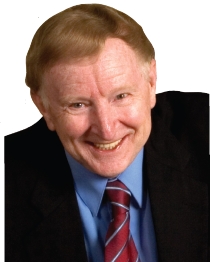 and 500 articles on nutrition. Dr. Passwater has been WholeFoods Magazine’s science editor and author of this column since 1984. More information is available on his Web site, www.drpasswater.com.
and 500 articles on nutrition. Dr. Passwater has been WholeFoods Magazine’s science editor and author of this column since 1984. More information is available on his Web site, www.drpasswater.com.Published in WholeFoods Magazine April 2017

